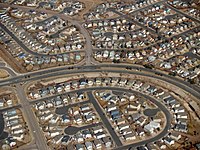
Photo from wikipedia
This paper reflects upon the mechanisms that enable development of curricular approaches to multidisciplinary architecture/engineering higher education. Building upon recent calls for integrated multidisciplinary building design practice, academics at UCL,… Click to show full abstract
This paper reflects upon the mechanisms that enable development of curricular approaches to multidisciplinary architecture/engineering higher education. Building upon recent calls for integrated multidisciplinary building design practice, academics at UCL, industry partners and respective professional bodies embarked upon developing a new course that challenged disciplinary boundaries and defined the needs of a new design professional. Whilst there have been attempts internationally to better integrate architecture as well as engineering education, efforts have largely been focused on bolt-on solutions based on pre-existing education programmes. In addition, there has been little discussion (empirical or theoretical) on practical measures associated with developing multidisciplinary education in the built environment. Drawing on mixed data including documentary evidence, semi structured interviews and observations, the study begins to shed light on the approaches underpinning the development of a multidisciplinary built environment MEng course at UCL that integrates architecture, building services and civil engineering. The paper’s contribution is threefold. First, the findings have implications for developing multidisciplinary built environment education curricula, through revealing key mechanisms including the need for shared attitudes and expectations. Second, the paper highlights the conditions that enable the negotiation of multidisciplinary curricula including institutional support, shared values and a collective need and willingness to explore new solutions. Third, the paper reflects upon the value of design studio learning as a critical integrative component to the delivery of multidisciplinary education in the built environment and STEM more widely.
Journal Title: International Journal of Technology and Design Education
Year Published: 2021
Link to full text (if available)
Share on Social Media: Sign Up to like & get
recommendations!